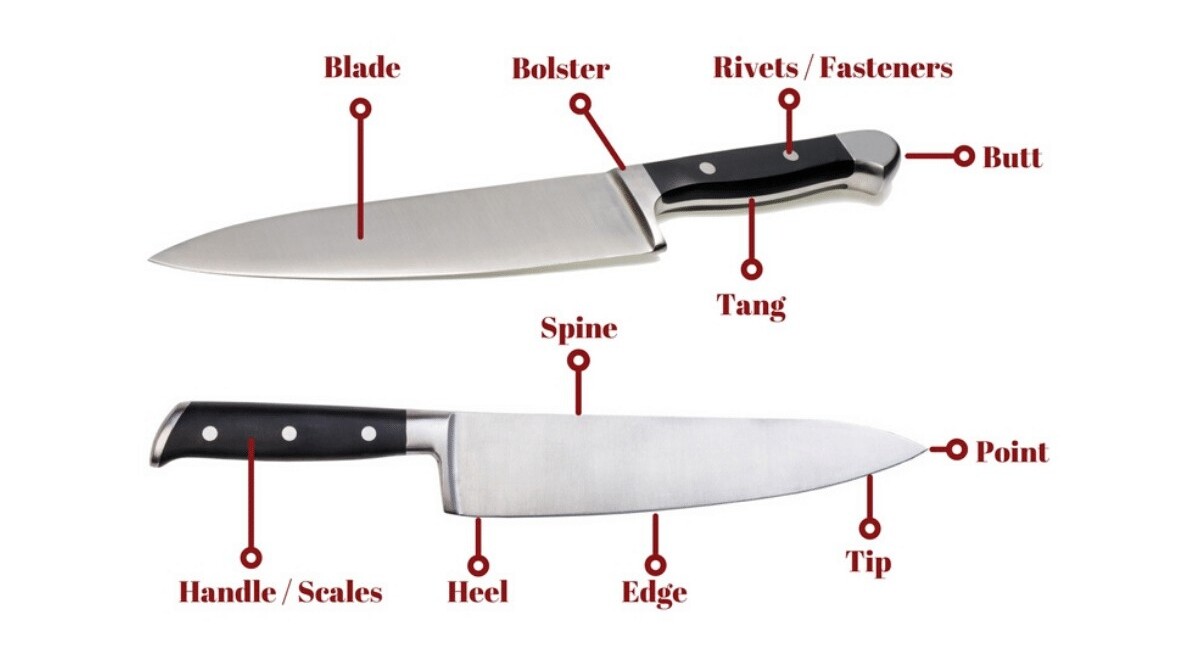
Knives are essential gear for anyone who cooks, from pastry chefs to pitmasters. And I’m assuming you fit somewhere into the second category?
Not just any knife will do for a particular job, and not all knives are created equal. For those reasons, we’ve taken several in-depth looks into the world of blades on this site.
However, when discussing knives in depth, on this site or with others, it helps to know all the parts of a knife to discuss our collection intelligently. And that’s something we haven’t covered yet. Until now.
In this article, we’re going to look quickly at some different knives available, and then look at what makes them tick.
You can’t be expected to make a good decision when you’re buying a knife if you don’t know a bolster from a butt, or a heel from a bevel.
So let’s sharpen our knowledge on knife parts.
Jump to:
Knife Anatomy 101: All the Standard Parts of a Knife Identified
If you think the only two parts of a knife are, “the cutting part,” and, “the holding part,” you are in for a surprise!
Blade

The blade is actually comprised of many parts and runs from the bolster to the tip, all of which we’ll cover further down.
In a nutshell, this is the business end of the knife. There are several blade types to be familiar with:
Straight Edge / Flat Ground
The simplest and most common knife-edge, it relies on being kept sharp and clean to do its job with maximum efficiency.
Hollow Ground
These blades are ground deep to leave concave sides and a very thin, fragile edge. Knives for fine or delicate work are often ground this way.
Serrated
Jagged edged, or serrated, knives feel very rough to the touch, and the serrations are clearly visible to the unaided eye.
Knives with this edge can tear through tough meat and vegetable fibers with ease. Steak knives are a common example of a serrated blade.
Scalloped
A scalloped blade has many, widely separated points connected by arches in the edge. Blades like this are able to grab hold of an otherwise unyielding surface and force their way through. A bread knife is typically scalloped, as are some of the best knives used for slicing brisket.
Granton Edge
A Granton blade has oval divots molded into the blade and running along its length. These specialty blades are designed to cut with little resistance, and are ideal for cleanly cutting slices of meat.
Edge

The edge of a knife blade is where the two sides meet in a point that runs the length of the blade, the part that you cut with.
Naturally, this is the sharpest part of the blade, and it does most of the work.
There are five common edge styles:
V-Edge
The most common edge in all of kitchendom, the v-edge is exactly what you think it is — the two sides of the blade ground into the shape of a v when seen in a cross-section.
Compound Bevel
On this edge, a standard v-edge is ground into an even tighter v right near the bottom of the edge. You can’t see it with the naked eye, but you might be able to feel it.
Convex Edge
Here the two sides of the blade arc in towards the center and meet in a sharp point. Basically a “v” with curves.
Hollow Edge
Kind of like a convex, except the arcs are concave. (Which I suppose is actually the exact opposite of convex…) Not commonly seen on good quality kitchen knives.
Chisel Edge
Picture half a v (or the end of a chisel) and you’ve got an idea what a chisel edge looks like. This is a very sharp blade, but thin and may require regular sharpening to stay keen.
A Note On Edge Angles: There are two schools of cutting edges — Western-style, and Japanese-style.
Western knives are sharpened to approximately a 20-degree angle and are sharp but durable.
Japanese blades are sharpened to 15-degrees and are far sharper, but less hardy.
Heel

At the very end of the blade, just before the handle, is the heel.
Generally, this is the widest part of the blade. It’s also where you have the most leverage and control.
If you’ve ever tried to push a blade through something hard, like a pomegranate, you’ve probably leaned hard on the heel.
Some slimmer knives have no heel, and the blade is swallowed up into the handle.
Bolster

Knives with heels often include a bolster directly in front of the handle. The bolster is part of the blade, but it is somewhat thicker.
The purpose of the bolster is to give added strength to the blade when it’s under strain from heavy work. It also protects fingers from making contact with the heel of the blade.
Furthermore, the added weight provides balance in a well-crafted knife.
Handle / Scales

Naturally, this is where you grip the knife during use.
Most handles are designed with at least a nod to ergonomics. Indeed, a comfortable handle will make the knife feel like an extension of your hand.
Some handles are made of two separate pieces that clamp around the blade (called scales), while others are a single, molded piece into which the blade end is inserted. In fact, some knives are actually made of a single piece of metal.
Common handle materials include plastic, wood, metal, rubber, and wood/plastic composites.
Knife collectors often seek out decorative knives with bone or antler handles, but they’re not really practical for the kitchen or the grill.
Tang

At the end of the blade is the tang, an extension of the blade that anchors into the handle.
The tang may run only part way into the handle, or could run up to the full length. On some knives, the end of the tang is clearly visible at the end of the handle.
Rivets / Handle Fasteners

On knives with scales (two-piece handles), the rivets fasten the two sides together and hold the blade in place by the tang.
You’ll usually find two or three rivets, depending on the length of the tang.
Point

As you might imagine, the point is the forward most spot on the blade where the top and bottom edges meet. If you stab something, you’re doing it point first. It’s not a cutting surface, but it is good for poking holes.
There are several kinds of point, each with a distinctive shape. You’ll find trailing points, clip points, drop points, spear points, needle points, and spey points.
Drop points are common in kitchen knives.
Tip / Belly

Not everyone makes a distinction between the point and the tip. Tip may be a bit of a misnomer, since this area is not at the “tip” of the blade. Belly is a more appropriate term, in my opinion.
The belly is the part of the blade edge close to the tip. Because it’s so far from the handle, you can’t apply much pressure at the belly. It is, however, good for delicate and precision cuts.
Spine

Not a cutting surface, but the thick top edge of the blade running from the point to the handle or bolster. The thicker the spine, the more heavy-duty the knife is.
For example, a filet knife will be flexible with a thin spine; whereas a cleaver will have a thick spine, so the blade will stand up to repeated chopping.
Butt

Also known as a pommel, the butt is the very back end of the handle. It’s here that you may see the end of the tang exposed.
The butt often forms a bit of a downward hook to help position and stabilize your grip on the handle.
Of course, the butt is frequently used as a pounding instrument, but we really don’t suggest you treat your knives this way. Repeated blows to the butt could loosen the tang.
Fixed Blade vs. Folding Knives
Folding knives are convenient in that you can fold the blade back into the handle for storage and travel. This protects the blade, but it also reduces its overall strength.
Folding knives are almost never seen in the kitchen. Save them for camping and whittling.
Features to Look For When Buying A Knife For Barbecue
Not all knives are created equal, so here are a few key features to consider when you’re looking to buy a quality knife.
- Buy the right knife for the job (i.e. don’t get a paring knife for slicing brisket)
- Look for a full tang on heavy-duty knives for extra strength
- Choose knives with riveted scales and tangs, not glued, they’re far tougher
- Wooden handles aren’t suited to wet environments, and as you’ll be using your knives outside they’re best avoided. (And if you do buy wooden handles, they should never go in the dishwasher. Really, none of your knives should go there.)
- Forged knives have greater structural integrity than stamped knives
Now You’re the Sharpest Knife in the Drawer
Short and sweet, but absolutely essential — if you don’t understand the jargon, you can’t make an informed decision, no matter the topic. (Which is a big part of why this site exists!)
Armed with your new knowledge, you can sally forth and fill your arsenal with the best blades for your needs.
We hope you found this article on the parts of a knife interesting and enlightening. Maybe you think it’s worth sharing? Share the link with anyone you know that’s due for an upgraded blade. Tell them all about the site where you found it, too!
As ever, please contact us with any questions you may have about this, or any barbecue topic. We’re also open to hearing your suggestions, and looking into any areas of concern. Just put fingers to keyboard and get in touch!
Thanks for reading. We hope all your barbecues are a cut above the rest!


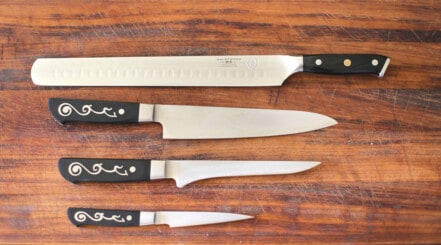
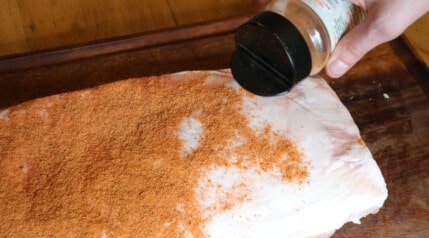
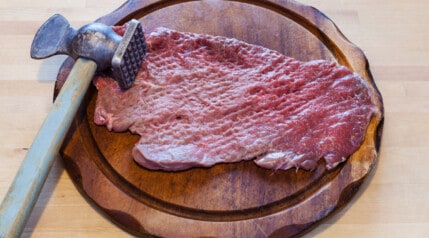
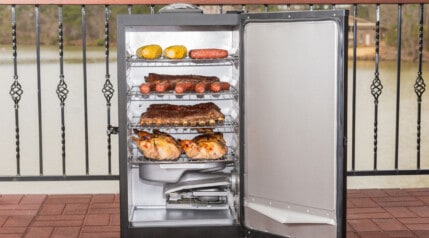
I want to see a study of the best chef knives.
Hi Kumraj. We’ve not covered this I’m afraid, but our friends over at Foodal have a great article on chefs knives, with buying advice and recommendations: Best chefs knives at foodal.com.